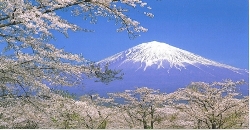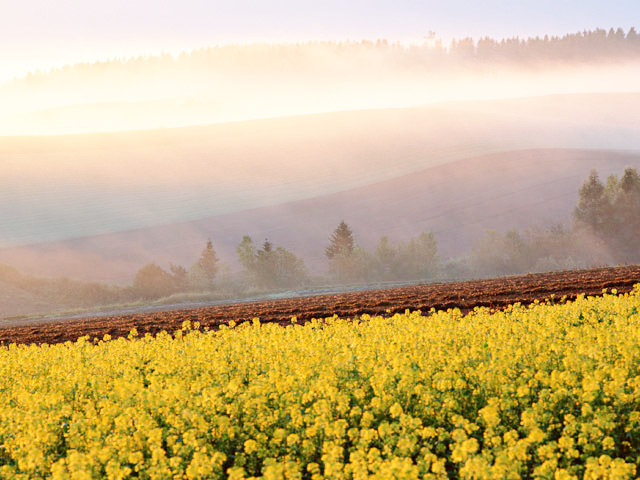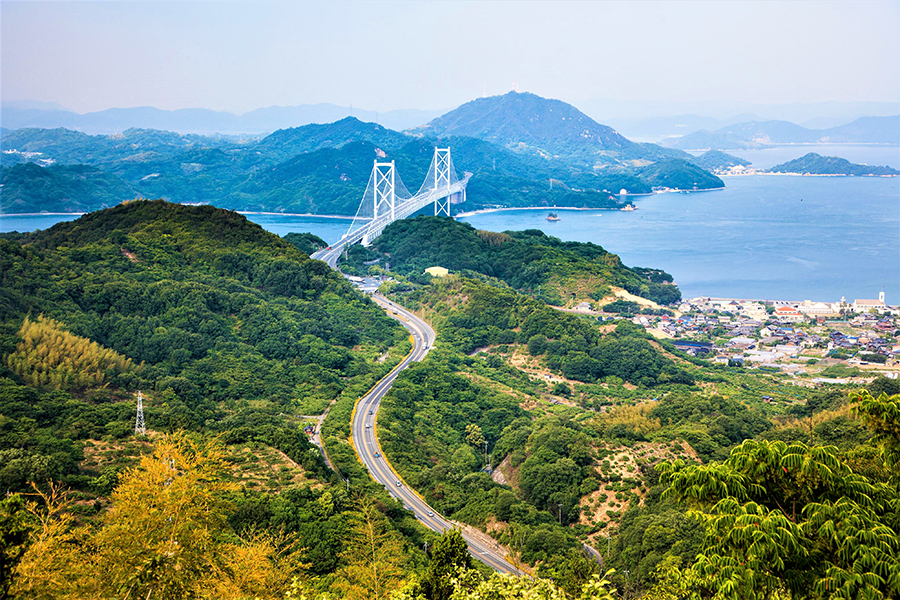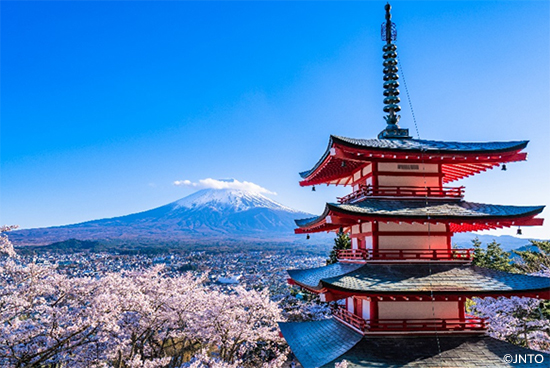Shinkans of Itsukushima Shrine For four days, we had a very rich itinerary including two major sites, Miyajima Island and Hiroshima, shrines, bridges, merchants houses, a soy factory, a kabuki theater, castles, hot springs, a towel museum, even a cycling adventure through Tatara-Ohashi Bridge on Seto Inland Sea. As a result, we were rushing from one place to another. Each of the places or activities was picked for a reason to show a different side of the Japanese culture and phase of Japanese history.
On Our Way to Tatara-Ohashi Bridge Our first stop was the Mori Museum. The Mori family is descendants of the Oe clan, which played an important role in introducing scholarship to the Heian Court between 8th and 12th centuries. The most significant member of the family, Mori Motonari (1497-1571) succeeded to control as many as 10 provinces in southwestern Honshu, Kyushu and Shikoku by the time of his death. A nice surprise was waiting for us at the entrance: the curator of the museum to give a private, insider's tour and a young member of the Mori family who came all the way from Tokyo to answer our questions about his ancestors. What a treat it was for a traveler!
Hofu Tenmangu Shrine On our way to Hofu Tenmangu Shrine, one of the most important three Tenmangu Shrines of more than 12, 000 in Japan, we saw children playing soccer right in front of the torii, the gate. Passing it, we entered the divine world and were welcomed by a young Shinto priest, a shinkan. He explained to us that the shrine was dedicated to Lord Michizane Sugawara, the deified scholar, poet and calligrapher. With his divine name, Tenjin died in AD 903 and his shrines have become pilgrimage sites for students of all ages since.
Writer with Hofu Tenmangu Shrine's shinkan The shinkan who has been with the shrine for seven years, proved to be an excellent guide and even led the tea ceremony held in the teahouse of the shrine. After a while, we found ourselves sharing his enthusiasm about his shrine and its surroundings. With him, even the pieces of wood that the teahouse was made of were as alive as the carp in the pond around the teahouse. One more time, I cherished the presence of a local who enjoys sharing his love of his native land and place with us. That turns a "tour" into a cultural experience, an expedition. These are the moments when you feel like you are really not an outsider but a new comer, a guest who wants to learn and share.
Tea Ceremony After sampling delicious "wagashi", Japanese sweets which are traditionally associated with the tea ceremony, and drinking green tea, it was time to leave, but not without the little gifts they prepared for each of us. That was a little boar, one of the Zodiac animals, as this is the boar's year according to the Chinese calendar. When we were leaving, the children were still playing soccer in front of the torii. That was a cheerful re-entry to our busy lives after the peace of the sacred world. Ozgun Tasdemir (Japan Travel Specialist) Operations Manager Tourcom Int'l. Inc.
























































